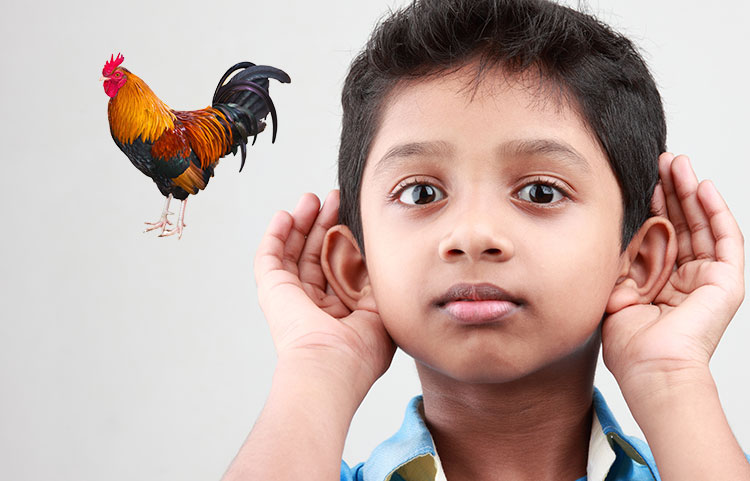A2: Name That Sound
1. Overview
The child listens to a sound and has to identify the sound. This helps the child learn to focus their attention onto a particular sound.
A2: Name That Sound
2. Materials
A smartphone or computer that can play the sounds below:3. Activity
Prepare the child by playing all the sounds you are going to use, naming each sound as you hear it. This gets the child familiar with the sounds and their names.Adult: [plays Cow] That was a cow. [plays Rooster] That was a rooster. [plays Baby] That was a baby.Talk to your child about how to listen. Show him how to close his eyes and focus on what he hears, not just what he sees.
Video: How to play Name That Sound
Have your child sit with his eyes closed and listen while you play a sound for him. Then ask what he thinks it is.
Adult: Listen. [plays Dog] What was that sound? Child: Umm… Adult: Let’s play it again. Listen. [plays Dog] What did you hear? Child: A dog!Repeat this several times with a variety of sounds. ↑ Top
4. Confidence Builder
If the child has trouble identifying a sound, help by giving two options.Adult: Listen. [plays Cow] OK, what was that sound? Child: Umm…I dunno. Adult: Was it a cow, or a drum? Child: Cow!↑ Top
5. Extension
Instead of playing sound clips, use environmental sounds—anything happening around you. Have him sit with his eyes closed and just listen to the sounds around him for a few minutes. Then ask him to identify or describe the sounds he heard. Start with just the usual noises (e.g., hum of the refrigerator) and then maybe add some of your own (e.g., crumpling paper). Here are some examples:- Wind blowing
- Trees rustling
- Cars driving on street
- Airplane flying overhead
- Appliances running
- Clock ticking
- Jingling dog collar
- Crumpling paper
- Bouncing a ball
- Whistling
- Chewing something crunchy
- Snapping fingers
6. Variation
You can engage in this activity outside the home as well. Ask your child what he hears while you’re in the car, at the park, in the grocery store, etc. ↑ Top7. Small Groups (2-5 children)
Lesson Objective: Children will be able to focus their attention and identify a specific sound. GELDS (Georgia Early Learning & Development Standards): CLL2.2b, PDM4 Adaptation: Read the main activity, watch the video, and follow the instructions above, with the following changes:- Have the children take turns making sounds for the others to identify.
- Have the children select an animal sound for the children to identify.
Adult: Listen. [makes sound] Was that a cat? Children: [thumbs down] Adult: Was that a baby? Children: [thumbs down] Adult: Was that a dog? Children: [thumbs up]Use this Reinforcement at Home form to tell parents and guardians how they can reinforce lessons outside the classroom. ↑ Top
Leave a Reply


2 Responses to “A2: Name That Sound”
Soraya Quezada
I just loved it
Amalia Lee
I really loved it!!!! Thank you so much!!!!:)